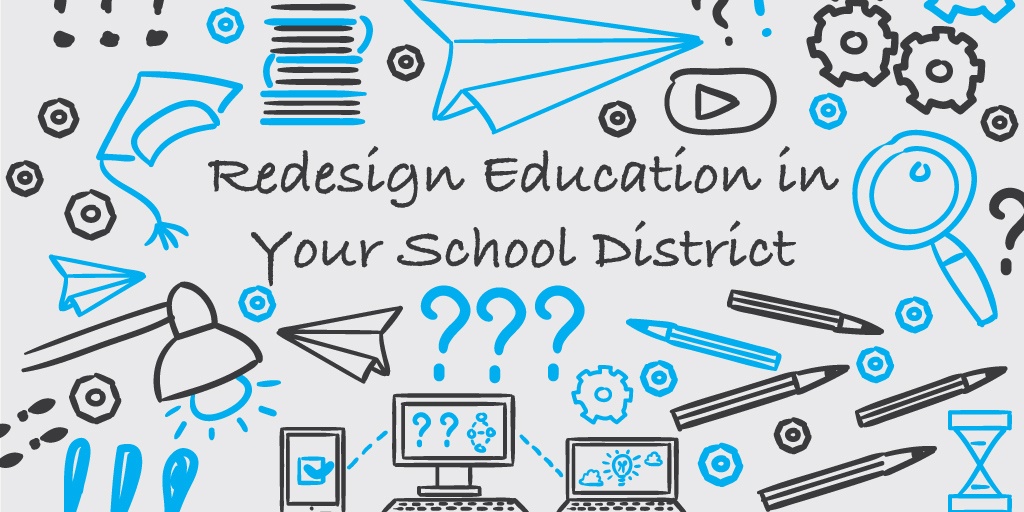
I feel fortunate to work in a state that has a very compelling vision for education. In Kansas, our commissioner has articulated exactly what we are to do every day in our classrooms, our schools, and our districts: Produce students who can be successful.
Following No Child Left Behind, this vision feels very different and much broader. A few years ago, we were tasked with simply producing students who could pass reading and math assessments at the state level. That was it. That was all that “mattered” for accreditation and evaluating our effectiveness. As educators, we know that these test scores did not correlate with success—but it wasn't up to us.
All of that changed with the ESSA act a few years ago. More local control was given back to the states, and accreditation didn’t come solely from an individual test on a given day. Teachers began to focus again on all the factors that impact a student being successful instead of just math and reading.
Approaching Education Differently
In Kansas, our State Board of Education has pushed beyond simply being relieved that NCLB is over. They have created a “school redesign” system to support districts in finding ways to “do” education differently in order to really meet the needs of our current learners—and our current needs in the industry.
The unique part—the redesign—can look different for each individual school district. By engaging the community in the process of thinking about what makes “successful” graduates from our schools, redesign efforts can vary greatly depending on the community and district that is implementing the change.
There is no “blueprint” for what this looks like. There are a number of factors that schools are considering to see how education could look different in their schools, with the focus always being on student success and what that means.
Here are some of the different considerations that schools are discussing:
- Relationships are critical to student success, but our system doesn’t foster deep and long-lasting relationships. Again, each school may interpret this differently, but many districts are looking at the benefits of teacher looping in elementary classrooms and an advisory/homeroom time at the secondary level. Another idea that has been discussed is a “house system" to help students develop relationships over years with adults. Regardless of the approach, the hope is that students are more connected with both the people and the institution, which can improve student outcomes.
- Learning doesn’t happen for all students at the same rate, but our system builds pacing guides to make sure content is covered. All teachers already know this, and many do a great job of managing this truth in their classroom. We all know that this could be much easier for teachers if the system took this same truth into account. Schools who are redesigning are considering multi-age classrooms, altering high school enrollment processes, and making time more flexible for students who are both quick and slow at learning.
- Students are motivated by choice and self-direction, but whole-group instruction is the most frequently observed instructional practice in our classrooms. Again, some individual teachers provide choices all the time, but our system doesn’t necessarily provide choice. For elementary students, we keep the class together, often to make teaching more manageable. We maintain that some specific courses are “required” at the high school level, even though the content may not be relevant to each student’s career path. Many redesign districts are using project-based learning, makerspaces, and genius hour to help accommodate these needs for students and increase motivation.
- Students need soft skills, employability skills, and technical skills to be successful, but most of what we focus our instructional time on is ELA, math, science, and social studies. This may sound like a broken record, but most teachers already know this—it is the system that hasn’t paid attention to it. In our state, we now must have a local measure of social and emotional learning (SEL). The redesign schools are weaving these soft skills into career planning and internships, along with curriculum models at the elementary level.
- Many students spend years after high school determining a career path, but high schools can offer experiences to help expedite this process. Another new requirement from our state is to have an individual plan of study (IPS) on file for every high school student. This tool helps to support students in having post-secondary options planned before graduation, which increases the likelihood of success in post-secondary schools. Redesign districts are creating internships and integrating workplace skills in high school, enrolling students in courses based on their interests, and building community partnerships to help support students in becoming successful.
The redesign schools in Kansas are paving the way for a new model of education in which the system creates supportive structures for all students. It is an exciting time in our state as all schools focus on success—and helping students achieve it.
Considering working on your own redesign or rethinking how your classroom and learning is structured? Check out our informative education guides and eBooks for inspiration!


